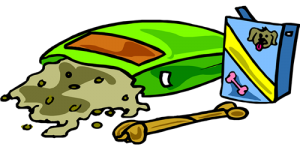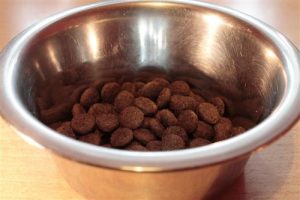How to Read Dog Food Labels
When we cruise around San Diego visiting our mobile pet grooming clients, we get to see firsthand how much your fur babies love their active lifestyles. They accomplish a lot in a day, so getting the right fuel is pretty important. Good nutrition is not only important in contributing to the length and quality of their life, but has a great deal to do with the quality of their coat, too.
When a dog does not get the right nutrients in the right amounts, it will cause deficiencies that will eventually become evident in their health. Fortunately, you can catch nutritional issues before they become serious problems by looking for health indicators. One of the first indicators of a nutritional deficiency is changes in the dog’s coat.
 If you notice changes in the luster of the coat, or unusual fur loss, you might want to take a look at the nutritional label on the dog food. Most brands of dog food claim to be nutritious and use high quality ingredients. This is not always true.
If you notice changes in the luster of the coat, or unusual fur loss, you might want to take a look at the nutritional label on the dog food. Most brands of dog food claim to be nutritious and use high quality ingredients. This is not always true.
Here is how to decipher the labels to make sure your faithful friend is getting the nutrients he needs:
- Look for the Guaranteed Analysis: The guaranteed analysis is the mandatory guarantee that the dog food contains exactly what it says it does in the specified amounts.
- Understand the Percentages are Different in Wet and Dry Food: To compare real nutrient values you must compare them at equal dry values. The listings on the label are for the food as it is fed, not as it would be on a dry matter basis. So without converting both brands of food to a dry matter basis you will not be able to compare them accurately. Fortunately, this can be done online. But if you want to do it yourself, here is how:
Take the percentage of dry matter, 90% for example. Then take the amount of what you are calculating, 20% protein in this case, and divide it by the 90% and get 22% protein on a dry matter basis.
- Ingredients are Listed in Order of Amounts: Just like on labels for food for human consumption, the ingredients are listed in order of amounts.
- Meat: “Meat” in the pet food industry is defined as the clean flesh of slaughtered animals (beef, chicken, lamb, turkey). “Flesh” includes fat, skin, meat, striated skeletal muscle, tongue, diaphragm, heart, esophagus, sinew, and nerves.
 Meat By-Products: Clean parts of meat products including the brain, lungs spleen, kidneys, liver, blood, bone, and some stomach tissue. It does not include teeth, hooves, hair and horns.
Meat By-Products: Clean parts of meat products including the brain, lungs spleen, kidneys, liver, blood, bone, and some stomach tissue. It does not include teeth, hooves, hair and horns.
- Poultry By-Products: The clean part of chicken products including head, feet, and internal organs. It does not include feathers.
- Fish Meal: The clean ground tissue of unspoiled fish or fish cuttings without the oil extracted.
- Brewers Rice: Small fragments of rice kernels
- Brown Rice: Unpolished rice left over after the kernels are removed
- Ground Corn: Whole kernel, ground or chopped
- Corn Gluten Meal: The by-product after the manufacture of corn syrup, and is the dried residue after the removal of the bran, germ, and starch.
- Soybean Meal: A by-product in the production of soybean oil.
- BHA: BHA is butylated hydroxyanisole, a fat preservative.
- Ethoxyquin: A chemical preservative that is used to prevent spoilage in dog food.
We know that as pet parents you want your fur babies to stay healthy. If you have questions about your pet’s nutrition, be sure to talk to a trusted vet. Don’t know one? Contact us for a recommendation. Many of our mobile pet grooming clients tell us about their experience with San Diego vets and we are happy to pass on that knowledge.
